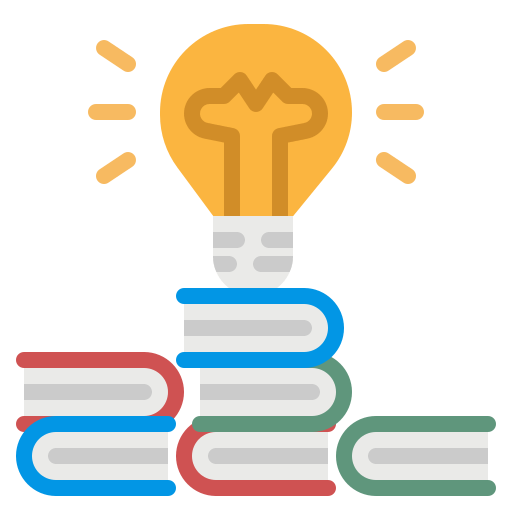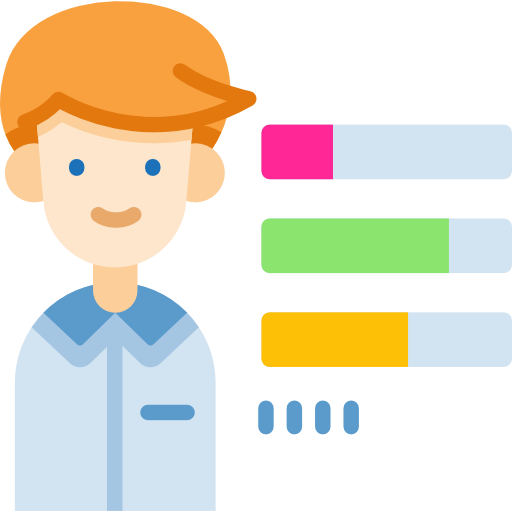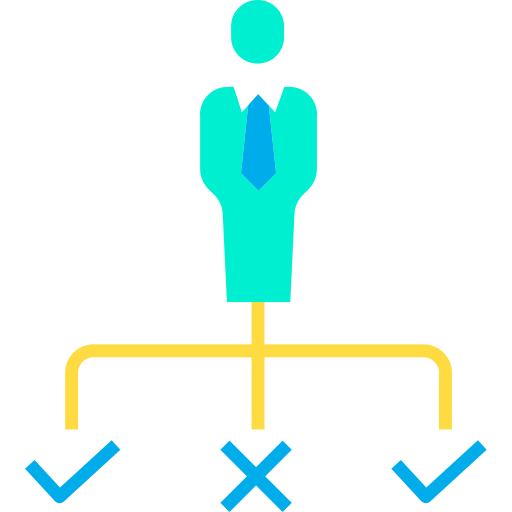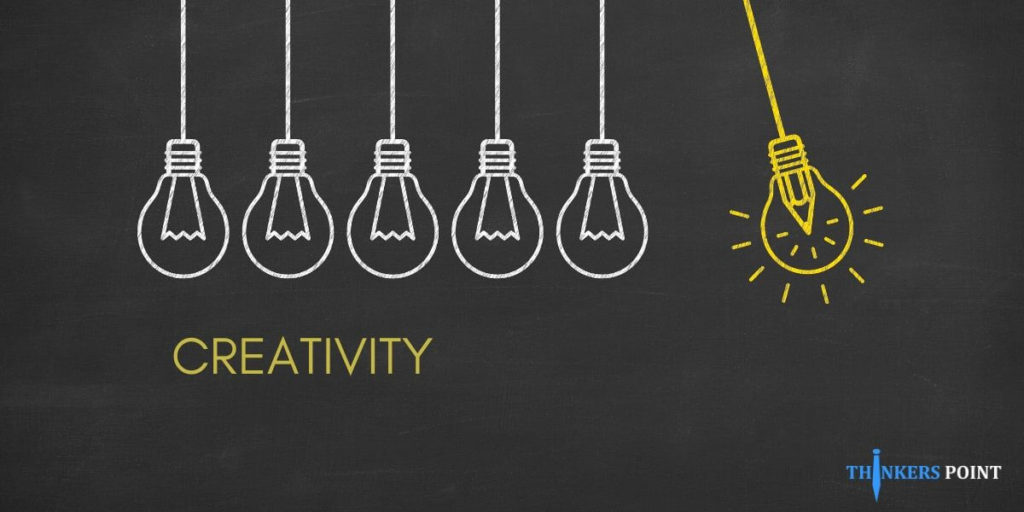Creativity is the art of implementing new imaginative ideas into reality. In simpler terms, it means weaving new ways and evolving new patterns to get away from the one same boring everyday stuff and visuals.
Innovation, the invention as well as the creation of something new, is considered unique and also has never been seen before.
The invention of the telephone was something unique, creative thought of Sir Alexander Graham Bell.
And then the evolution or say innovation in this field from the invention of not only telephones but also mobile phones and not to mention the invention of the pagers was among some the great ideas, and we call it creativity.
Open-mindedness, problem-solving capability, good communication, and writing skills, visual arts are the traits of creativity or we can say traits of a creative mind. Creativity is ubiquitous, it is everywhere and it is almost impossible to escape from it.
“Creativity is intelligence, having fun.”
– Albert Einstein
Comparatively, it is quite easy to come up with ideas and imaginations but it is very difficult to have uniqueness coupled with implementation skills. Without them, creativity is nothing, it will be of no use.
There is a long list of creative minds out there like Steve Jobs, Einstein, Frida Kahlo, who have come out with an invention, a novel, a new way of looking at the world.
Yes, creativity is not only inventing something but also, the way you look at the world is equally important and the imagination of yours in reality or fiction is also the art, we call creativity.
Creativity’s actual concept is hard to understand. the more you get involved in it, the more you will find how incredible phenomena it is and it leads to eternity. it has no borders and no limits.
What is that Leads to Creativity?

There are many interpersonal traits of people that promote creativity in their life decisions. They are –
- Self-confidence, people who can trust in their imagination and decisions and can question without any hesitation.
- Observational skills are like seeing the world/ problems in different ways and knowing how they are.
- A creative person should always have humility.
- he/she should be mindful as they should know in what way to think.
- They should be explorative and experimental.
- He/she should be curious about everything and anything.
- They should always have something to experiment with.
- They should not only think but also be actionable.
Several more practical traits should be in a person to be creative, in fact, these skills or traits can also be the order in which a creator thinks about something critically-
- Observation
- Analysis
- Interpretation
- Reflection
- Evaluation
- Inference
- Explanation
- Problem-solving trait
- Decision-making ability
“Creativity is a wild mind and a disciplined eye.”
“Creativity is nothing but a mind-set free.
It is the way you share your soul with the world.”
Creativity is quite mysterious, you never know who will in what way about the problem or anything.
How do We Relate It with Business?
Many people relate creativity with artistic jobs such as writing, painting, playing music, dancing, and many more.

But, the truth is not all creative minds are artists, many jobs in the business world, and even in science, need creativity. It is important in the workplace.
These days, employers seek the skill of creativity in their employees and bring new solutions and think with different perspectives at the workplace.
At the workplace, it is necessary to know your creativity skills to carry out new tasks, solve problems, and outcome to the challenges.
Old minds often become orthodox, biased and they lack new ideas and go on with old thinking and the same perspective. New and creative minds bring fresh ideas, unorthodox perspectives in their work.
Creative minds are considered a valuable asset to the company.

Can We Practice and Improve It?
People can be naturally creative and most of them are, but some need to recognize it on their own and use it efficiently, but this ability can be built up or improved with practice.
Solving riddles, solving Sudoku, letting go of your assumptions, and developing or practicing new perspectives helps in developing creativity. Even daydreaming can be called creativity.
Extending to More Fields –
Creativity can also be called ‘Thinking out of the box.’ For instance, Sherlock Holmes, a fictional detective realizes in one of his mystery books that no barking of the dogs can be an important clue in the murder case.
You can make your work artistic without being an artist. For example, making good decisions at the time of recession, making better and constructive investment decisions.
Creativity in STEM Areas-
People think that the field of science and technology, even in engineering and mathematics are artistic or say creative in their own way they are and can be highly creative like –
- Writing a highly innovative coding language
- Developing a hypothesis
- Proposing a new plan for underweight people
- Redesigning machinery to enhance productivity
A Dialectical Theory of Creativity
Holm-Hadulla had developed with his colleagues a dialectical theory of creativity. It is an interdisciplinary theory. The dialectical theory of creativity is the concept where creativity takes place in the give and take of order and chaos.

Similarly, creative ideas can be found in neurosciences and psychology also. In Neurobiology, it can be shown that the creative process takes place in a dynamic connection between coherence and incoherence that leads to new and usable neuronal networks.
In the case of Psychology, creativity is shown as to how the dialectic of convergent and focused thinking with divergent and associative thinking leads to new ideas and products.
Creative personality traits like the ‘Big Five’ seem to be dialectically braided in the creative process –
- Emotional instability vs. Stability
- Extraversion vs. Introversion
- Openness vs. Reserve
- Agreeableness vs. Antagonism
- Disinhibition vs. Constraint.
“You cannot use up creativity, the more you use the more you have. “
Several different theorists have suggested models of the creative person. One of the models suggests that there are four “Creativity Profiles”. They are as follows –
- Incubate (Long-term Development)
- Imagine (Breakthrough Ideas)
- Improve (Incremental Adjustments)
- Invest (Short-term Goals)
Types of Creativity-
1. Deliberate and Cognitive Creativity –
The people who are involved in this are quite purposeful. They are the ones who have invested in one field for a long time, built high-level creativity in that area. They develop skills and capabilities for every situation and task in that area.
The type of people in this area is mostly good in problem-solving capability, decision-making ability, research, analysis, and experimentation.
One prominent example of this type is the invention of the bulb and electricity, Thomas Alva Edison ran hundreds of experiments before inventing the bulb or electricity.
To conclude, this type of creativity requires a great deal of time, dedication, and knowledge.
2. Deliberate and Emotional Creativity –
The type of people who belong to this category is quite emotional and sensitive. Their work decisions are influenced by their emotions, being equally logical and relevant as well.
It is the end product of emotional thinking and logical actions. This type of creativity happens to people randomly. It is not deliberately done.
This is found in the amygdala and cingulate cortex parts of the human brain, where the amygdala is responsible for human emotions whereas the cingulate cortex helps in the learning and processing of the information.
“Everything you can imagine is real.”
3. Spontaneous and Cognitive Creativity –
There are times when we are trying hard to find the solution to a problem, say, making a study schedule for the week. But you are not able to think of any effective idea where in the first place you can study effectively and also manage your playtime and relaxing time.
But then suddenly while doing some other work or say just listening to the music you get an idea on how to manage your schedule. This is spontaneous and cognitive.
One such big example is the discovery of the law of gravity where Sir Isaac Newton got the idea of it while relaxing under an apple tree.
It works when our conscious mind is at rest. Say, we know that we want to get that particular job done, but we don’t know how then suddenly when you are relaxing you get an idea.
4. Spontaneous and Emotional Creativity –
As stated before amygdala part of the human brain is responsible for the emotional activities.
This type of creativity also occurs in the amygdala of the brain, in other words, the part of our brain which showcases emotions is also the reason behind our creativity.
This type of creativity is an epiphany. Epiphany is the sudden realization of something. This mostly happens to great and knowledgeable artists. Scientific breakthroughs, discoveries are all results of it.
It is like thinking of the situation with a very different perspective and having deeper thoughts about it. This type can’t be obtained, it is inbuilt.

What are the Qualities of a Creative Mind/Person?
Creative people are generally or say mostly –
- Energetic and focused
- Flexible with thoughts and perspective
- Dreamers
- Disciplined and playful
- Proud yet modest
- Curious
- Not afraid of criticism
- Rebellious at times
- Emotional
- Knowledgeable
- Open-mindedness
The Myths of Creativity, a book by David Burkus reveals the truth behind all these myths that people have about creativity, some of these myths are:
- Creativity is only artistic.
- Creativity is only required at the top-level management in the company.
- It cannot be developed enough or learned.
- This is a waste of time.
- It is not important as technical knowledge is more than enough.
- Creativity is a God gift.
![Myths About Creativity [Infographic]](https://thinkerspoint.in/wp-content/uploads/2020/07/Top-5-Myths-about-Creativity-575x1024.png)
” Creativity is contagious, pass it on. “
FAQ’s –
Ans: A creative person can create or develop new and innovative ideas, they see the problems with a different perspective and they are always curious.
Ans: Creativity is a skill, not a trait. As traits are assessed by good and bad. Creativity is something likability, ability to think beyond reality, create new possibilities, generate new ideas by the use of our mind. Being a skill it can be developed and practiced by several methods.
Ans: Creativity is the highest form of intelligence as it is the ability where people go beyond knowledge and create or generate something new and original and unique.
Ans:Creative skills include dancing, painting, visual arts, communication skills, problem-solving capability, new inventions and discoveries, open-mindedness.
Ans: The five creative methods used for exploring creative thinking are evolution, synthesis, revolution, reapplication, changing direction.
Ans: Some useful creative tools that can be used to boost your creativity are :
a) Mindtools
b) Sudoku
c) Puzzles
d) Brain Plots
e) PaintNite
f) Doodle Buddy
g) AllTrails Hiking App
h) SnapGuide
i) Fyuse
Ans: A creative thinker is someone who thinks outside the box. There are five types of creative thinkers: The lateral thinker, the inspirational thinker, The divergent thinker, the systematic thinker, and the aesthetic thinker.


Pingback: What is Leadership? | What are the essential qualities of a true leader?
Pingback: Personal Skills | Types of Personal Skills | Soft Skills | Thinkerspoint